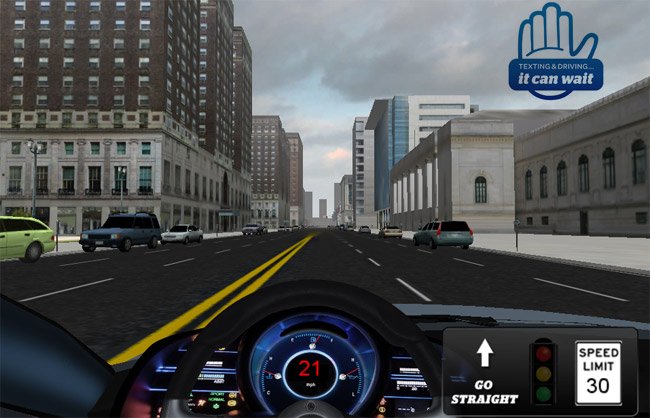Texting While Driving Simulator: Gaming Safety
Can Driving Simulators Influence Behavior Behind the Wheel?
How often do you send text messages to your friends and family every day? If you’re like us, we’re guessing it’s a lot.
As smartphones have become prominent, so too has the act of messaging others instead of phoning them to communicate. We rely more than ever on handheld technology to keep in touch with those close to us – despite the fact that we’re behind the wheel.
But what if virtual technology could also make you a better driver? We’ve entered an age of high-tech driving where driverless cars are around the corner, so anything is possible. Driving simulators are an innovation that’s already here and being used. But which driving simulators can actually help you drive more safely? Let’s take a look!
Types of Driving Simulators
A driving simulator can take on many forms. You may have already used one and didn’t even realize it. Different types of driving simulators are designed for specific purposes. The most common types of simulators include:
Human factor driving simulators
Vehicle dynamics driving simulators
Entertainment/Game driving simulators
In terms of driving abilities and behaviors, human factor driving simulators are the best for assessment and education. They are made to provide a real-world experience and are the most like an actual car. This type of driving simulator combines visual systems, motion bases and sophisticated computer software. One of the most impressive examples of a human factor driving simulator is at the University of Iowa.
While the production value and graphics are outstanding, entertainment driving simulators don’t mimic the in-car experience. Vehicle dynamics driving simulators are primarily used by manufacturers to test models in a realistic environment since it measures vehicle performance more so than driver behavior.
Even though the thought of using a simulator instead of in-car training might sound appealing, most simulators aren’t made for educating new drivers. You can only get that the old school way with behind-the-wheel-training.
Are Simulators a Substitute for In-Car Driving Lessons?
We’re all about alternative learning methods, but some things are better suited for real world resources - and driving is one of them. Simulators are great as a supplemental learning tool, but they’re no substitute for in-car lessons. The Department of Transportation (DOT) has noted that most driving simulators have shortcomings, particularly in creating an immersive environment, but there is promise.
“Even though a driver might perceive differences between a simulator and the car on the road, the difference might not influence driver behavior but may still result in differences in workload and driver strategies in obtaining the same driving performance.” DOT Research Summary
No simulator yet can replicate the real feel of a vehicle that’s on the road with other drivers. Using a driving simulator can be a great first step before new drivers get behind the wheel, but it’s going to be a while before we think about replacing driving instructors.
However, you can save yourself a little travel time by taking drivers ed online. It can be paired with professional in-car driving lessons or parent taught driving lessons to meet the requirements for getting a license.
Select Your State to Get Started Today!
Ready to Take on a Driving While Texting Simulator Challenge?
We all know that texting takes our eyes off the road and distracts us from driving responsibly – but just how dangerous can it be? Learn about the dangers and consequences of texting and driving first hand with the AT&T It Can Wait game simulator.
Get Behind the Wheel
About It Can Wait - Talking on the phone while driving may be dangerous, but texting while driving is perhaps the most hazardous action that is prevalent in society today.
- Texting and Driving Videos - See just how dangerous texting and driving actually is in these videos.
This article was updated on 9/10/2020







